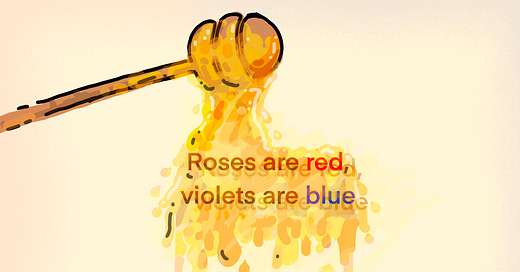“Poetic expression,” says the sugar-coated-pill theory, “is the honey that makes palatable the medicine of content, be it philosophical, moral, or scientific.” It’s an old theory, evident even in Greek and Roman theory and practice. For its defense, a team of lawyers might submit as their Exhibit A, the Roman philosopher Lucretius, who chose, as the saccharin for his treatise De rerum natura, the rhythms of dactylic hexameter. Explaining himself, he wrote that, because his Epicurean doctrine will seem “harsh to those who have not used it,” “I have chosen to set [it forth] to you in sweet-speaking Pierian song.”
This sweet story, told by Peter Kivy, reminds us of how new is the idea that the “form” and “content” of a poem are united, inseparable, one and the same. Lucretius had the content of his doctrine worked out well in advance, without thinking he’d thereby foreclosed any of the myriad forms arrayed before him like so many aisles of candy.
Having proved “form/content unity” foreign to some poetic traditions, Kivy marshals additional indirect evidence against it, by constructing a speculative genealogy. He attributes to the idea’s emergence, motives not well-tuned to the truth:
Keep reading with a 7-day free trial
Subscribe to Mostly Aesthetics to keep reading this post and get 7 days of free access to the full post archives.




